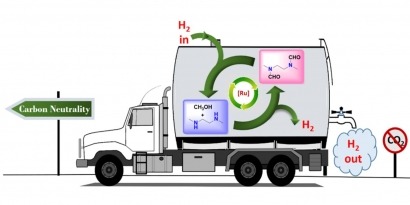
Senior author G. K. Surya Prakash, 1994 Nobel Prize in Chemistry winner George Olah and their team at the USC Dornsife College of Letters, Arts and Sciences devised a way to produce and store hydrogen from methanol, without concurrent production of either carbon monoxide or carbon dioxide, by trapping it in organic derivatives of ammonia called amines.
“The Methanol Economy” is a concept that the Olah-Prakash team first began refining in the mid-1990s, right after the time Olah became USC’s first Nobel laureate. The goal of a methanol-based economy would be to develop renewable sources of energy, led by methanol, that could mitigate the problem of climate change caused by carbon emissions, as well as the U.S. dependence on other countries for energy.
The need to offset crude oil consumption has only grown in the intervening decades since Olah and Prakash began their research. At that time, global consumption of oil was around 70 million barrels; that number is expected to be about 100 million as early as next year.
The research of Prakash, Olah and their team has been focused on finding a way to extract hydrogen fuel from methanol in ways that are not only carbon-neutral, but can even be carbon-positive.
Also involved in the study were senior research associate Alain Gopeppert, graduate assistants Jotheeswari Kothandaraman and Sayan Kar, and a summer intern, Raktim Sen, all of USC Dornsife.
The fossil fuel fight goes on for USC scientists as they develop a new method for creating reversible hydrogen storage based on methanol, with no carbon emissions, in the last major paper co-authored by USC’s first Nobel laureate, the late George Olah. (Image credit: Sayan Kar)
For additional information:

